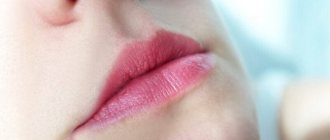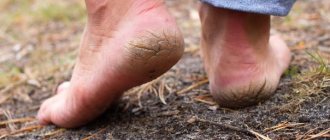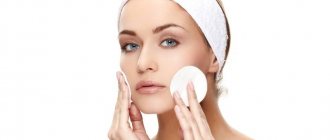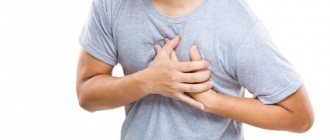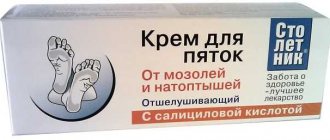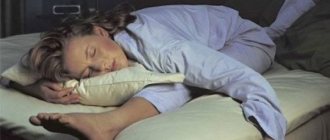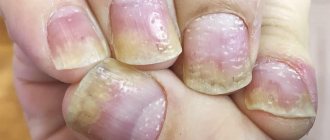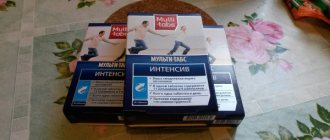What are seizures in the corners of the mouth?
Zaeda is not a medical term, but a household term. But it has very firmly entered the vocabulary of not only ordinary people, but also medical workers. Zaedu can be attributed to a certain symptom, which is based on the appearance of a skin defect in the corner of the mouth, accompanied by inflammatory changes in tissue in the affected area and surrounding areas. Naturally, this cannot happen without a trace for a person. And although this condition does not pose any danger, it does bring some discomfort. This is especially true during a long process.
In general, such a harmless symptom as jamming should not always be considered unambiguously. After all, in the normal state of the body it does not occur. Consequently, sometimes it can act as a kind of “small tip of a big iceberg.” This means that seizures can be not only an independent insignificant problem, but also a secondary sign of various diseases at the time of their occurrence or exacerbation. This will be discussed in more detail in other sections of the article.
Here, it is advisable to indicate with what terms seizure is associated in medical circles. They can be heard at an appointment with a dentist, dermatologist or therapist. These include: angular stomatitis, angular stomatitis, slit-like impetigo. They should not evoke any fantasies in the patient’s head about the severity of his condition, who sought help due to a small, albeit annoying, seizure. Similar terms are the same state.
In its development, a jam in the corner of the mouth goes through a number of successive stages. It all starts with the formation of a small bubble filled with a small drop of liquid. It may be transparent or somewhat cloudy. Usually, during a conversation or under the influence of external factors, the vesicle ruptures, exposing a small erosive surface on the skin or mucous membrane of the corner of the mouth. Soon it enlarges and becomes crusty.
Clinical manifestations of seizures are reduced to the following signs:
- Redness of the skin with wetness, or a small wound in the area of the corner of the mouth;
- Constant itching and discomfort in the area of inflammation;
- Pain when opening the mouth;
- The appearance of deep cracks.
Video: what are jams? How can you quickly cure them?
Comments
Previously, a folk recipe always helped me against seizures: I applied aloe juice to the corners of my lips, I also read that green tea bags and lotions from them help well - it really did help. But lately nothing has saved us in winter. What can you recommend?
Vydrina Galina (02/17/2019 at 12:41 pm) Reply to comment
- Dear Galina. In winter, this disease really gets worse for many people. To reduce the likelihood of its occurrence, try not to lick your lips on the street, use hygienic lipstick, and at home you can treat your skin with compounds high in vitamins E or B12. But among other things, we still recommend that you see a doctor who will examine your body and prescribe treatment. After all, in your situation, seizures are not an isolated phenomenon, but occur on an ongoing basis, which may indicate problems with internal organs.
Editorial staff of the portal UltraSmile.ru (02/19/2019 at 09:38) Reply to comment
Everything can be easily resolved - use toothpastes WITHOUT FLUORIDE. I had the same thing for many years, but as soon as I switched to toothpastes without fluoride, the redness disappeared, and for the third year now it has been gone.
MT (07/03/2020 at 16:59) Reply to comment
Write your comment Cancel reply
Causes of sticking in the corners of the mouth
Microorganisms are the direct culprits behind the formation of pockets in the corners of the mouth. There are no other reasons and cannot be. Another thing is why these microbes suddenly provoke skin lesions in the area of the corner of the mouth. It’s worth mentioning right away that of the representatives of the microbial world, only two species are capable of causing pests. This is a streptococcal and fungal infection. Of the first group, the most active in this condition is epidermal streptococcus, of the second - yeast-like fungi of the genus Candida.
They are the ones that can cause inflammatory damage to the upper layers of the skin, which is limited in nature. Considering that both of these microbes belong to the conditionally pathogenic microflora that lives on the surface of the skin of every person, certain conditions are required for their activation with the subsequent formation of a seizure.
Seizure as an independent symptom
- Using unwashed dishes;
- Eating unwashed vegetables and fruits;
- Constant licking of the lips, corners of the mouth and stagnation of saliva;
- Violation of the rules of hygienic oral care;
- Squeezing pimples and scratching the skin in the area of the corners of the mouth;
- Hypothermia
Zaeda as a manifestation of disease
- Iron deficiency and other types of anemia;
- Liver diseases;
- Hypovitaminosis;
- Diabetes;
- Immunodeficiency conditions (decreased immunity);
- Prolonged increase in body temperature;
- Courses of hormonal therapy with glucocorticoids, immunosuppressants, cytostatics.
Some points among the reasons for the development of seizures are worth dwelling on separately, as this is important when choosing a treatment method. First of all, it is worth noting the specific patterns in relation to the pathogen that caused the seizure. Isolated seizures are most often provoked by streptococcus, while fungal infection is always widespread with parallel damage to the corners of the mouth, lips and oral cavity.
Factors in the development of seizures
As for the mechanisms of development of seizures under the influence of causal factors, we can say the following. The direct pathological agent that causes skin damage in the corner of the mouth is a microbial factor. But the realization of the pathogenic properties of these microorganisms is possible only under the influence of provoking factors that cause either skin damage at the site of future seizure or a decrease in immune surveillance. In the first case, unprotected skin for a certain time is simply not able to resist streptococci and fungi until it is restored. Then jamming arises as an independent problem.
Symptoms
The pathogen can be identified even by its appearance.
- With streptococcal angulitis, a soft bubble with transparent contents first appears in the corner of the lips. When it bursts, a bloody ulcer with a soft crust appears. If the crust is removed, the ulcer will begin to bleed, and after a few hours it will heal again.
- Candidiasis immediately appears as a scarlet ulcer in the corner of the lip. The surrounding skin is soft, moist, fringed. Instead of a crust, the irritation may be covered with a whitish soft coating. Since the Candida fungus is constantly present in our body, such seizures can appear regularly when immunity decreases.
Cracks from jamming in the corners of the mouth
The seizure itself brings moderate discomfort to a person if its course is not complicated by anything. First of all, this concerns the formation of deep, painful cracks in the corners of the mouth. This process is much more difficult to eliminate due to the presence of a relatively larger wound defect and inflammation of the adjacent skin areas.
Consequently, the treatment process is delayed for a longer time compared to the treatment of uncomplicated seizures. The mechanism for the formation of cracks at the site of the lesion is quite simple. A formed jam in the corner of the mouth can develop in two ways. In the first case, skin damage by microbes is superficial and proper treatment of this process leads to its rapid relief.
If you do not follow the rules for caring for such a jam, or it initially begins to progress, affecting the deeper layers of the skin, then sooner or later it will end with the formation of a crack in the corner of the mouth.
If its depth reaches the level of lymphatic capillaries, this leads to the appearance of discharge from the wound, which spreads to the surrounding skin, causing it to thicken and dry out. It shrinks and loses its elasticity. When it is stretched during eating, laughing, or talking, the skin tears.
The result of all the described processes, which close a kind of vicious circle, is the formation of a jam-crack in one or both corners of the mouth. The most severe complication of such a local process is the transition of inflammation to adjacent areas of the skin in the affected area. As a result, new cracks form and unite into one wound, covered with a crust and accompanied by constant weeping. If the necessary measures are not taken, the process will gradually expand with transformation into a fairly extensive wound.
Treatment
Sometimes, in order to cope with irritation in the corners of the lips, it is enough to pay more attention to skin care: do not eat or drink in the cold, use nourishing creams and lip balms.
It is also necessary to protect the damaged surface from new infections: do not touch the ulcer with curses, do not tear off the crusts, and rinse with disinfectant solutions.
To treat streptococcal infections, ointments containing antibiotics are used. For candidiasis, use drying ointments with an antifungal effect. The ointment is applied at least 2 times a day. In most cases, relief comes after two days of treatment.
During treatment, it is necessary to maintain a healthy lifestyle, proper nutrition, and pay special attention to B vitamins. In addition to pharmaceutical tablets, the necessary substances are contained in such products as:
- dairy
- beef
- legumes
- broccoli, spinach, sprouted oats
How to treat jams in the corners of the mouth?
The treatment process for jams in the corners of the mouth depends on the immediate cause of their occurrence. It includes local (local) therapy and general measures. It is always worth starting with local effects on the jam. They can be represented by folk methods and traditional modern medicine. First of all, it’s worth focusing on the most favorite methods among everyone who faces this problem. Naturally, everyone wants to get rid of it as simply as possible.
On the subject: How to quickly get rid of jams?
Treatment at home
The first to come to the rescue are the available means of traditional medicine. Favorite and proven methods from this section are:
- Applying earwax to the impaction. The treatment method, although not entirely aesthetic, is very effective;
- Grind the plantain leaves into a paste until the juice comes out. Lubricate the cracks with the resulting mixture;
- Prepare a mixture of bee honey and pork fat 2:1. Use to moisturize the skin in the corners of the mouth;
- The use of natural vegetable oils in the form of lotions or simple rubbings. Tea tree oil, olive oil, and rosehip oil help well;
- Applying freshly cut pieces of garlic to the jam. Has an excellent antimicrobial effect;
- To combat seizures of fungal origin, washing wounds with a concentrated soda solution or its mixture with vitamin B12 is well suited.
Other folk remedies for seizures
Drug treatment
In the typical course of seizures, only local therapy is indicated. Such drugs include:
- Stomatidin. A good antiseptic used for mouth rinsing and as a lotion for jams. Has an equally good antimicrobial effect on streptococci and fungi;
- Metrogyl denta. Presented with a balanced mixture of metronidazole and chlorhexidine bigluconate. Thanks to this composition, the entire antibacterial spectrum is completely covered against possible pathogenic microbes living in the oral cavity and on the skin around the mouth;
- Bepanthen and D-panthenol. They are used mainly at the stage of wound healing. Their use should be preceded by the application of local antibacterial drugs or their simultaneous combination;
- Tetracycline ointment. You can use its simple fatty forms, or you can apply eye ointment. The latter does not cause an unpleasant burning sensation and is very well tolerated;
- Weak glucocorticosteroids with antibiotics. Indicated for severe inflammatory changes. The most common ointments are: hyoxysone, trimistin, triderm;
- Cauterization of jams with solutions of antiseptic dyes: fucorcin, iodine, brilliant green. After this procedure, be sure to moisturize the skin with any oil solution or cream.
- Clotrimazole. Antifungal cream. Indicated in cases of exclusively fungal lesions of the skin of the corners of the mouth. It has no effect for streptococcal infections.
Video: 2 steps of treatment in 4-7 days (translation):
General restorative treatment
If, despite the use of local therapy, it is not possible to achieve healing of the scar, this indicates serious health problems. There is a need for detailed diagnosis and restorative treatment.
Which doctor should I contact?
Depending on the reason that the corners of the lips turn red, treatment is prescribed. To overcome the problem, you need to consult a dentist or dermatologist. After examination by a doctor, additional examinations may be prescribed in the form of:
- general blood test;
- ultrasound examination of the abdominal organs;
- immunograms;
- vitamin level studies;
- test for allergens.
Diagnostics
Laboratory tests will help to make an appropriate diagnosis and determine why the mouth jam has formed. The reasons may be different. To do this, biomaterial is taken from the patient for examination (scraping), this is necessary to identify the presence of fungal formations. If the study shows a negative result, then in this case angular stomatitis is excluded from possible diagnoses.
In addition to scraping, a general blood test is taken from the patient, which is necessary to exclude or confirm anemia. And also a blood test for sugar, since angular stomatitis is often observed in people with diabetes.
Only after all the tests have been carried out can the doctor accurately make an appropriate diagnosis and determine the causes and treatment appropriate to the nature of the disease.

